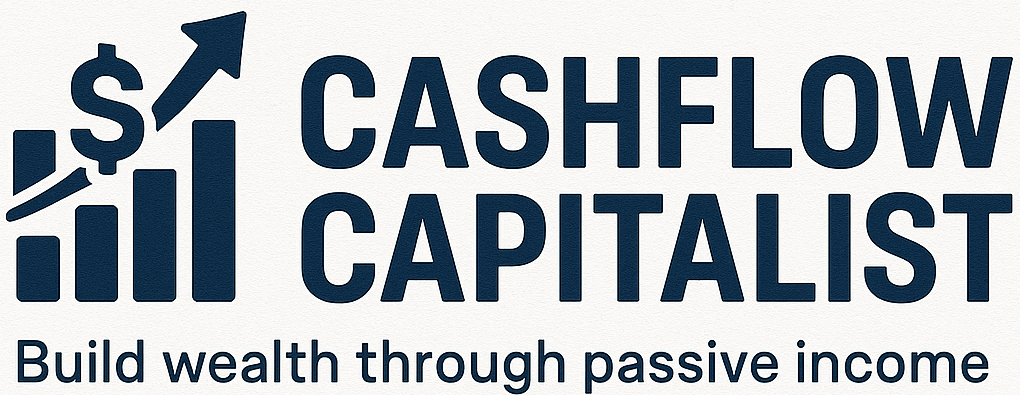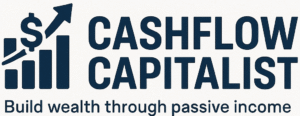Top 5 Canadian ETFs to Watch in 2025 for Strong Growth and Monthly Income
Investors looking to grow their wealth and earn passive income in 2025 are eyeing Canadian ETFs. These are seen as a low-cost, diversified way to achieve financial freedom.

Canadian ETFs have grown a lot, giving investors many choices. Low-cost ETFs are great for long-term growth. They’re a favorite for TFSA, RRSP, or non-registered portfolios.
Whether you’re starting out or improving your investment strategy, the right ETFs can really help. This article shows the top ETFs ready for strong returns and steady income.
Key Takeaways
- Low-cost ETFs offer a cost-effective way to achieve long-term growth.
- Canadian ETFs provide a diversified investment portfolio.
- Top ETFs for 2025 are expected to deliver strong returns and consistent income.
- Investors can utilize TFSA, RRSP, or non-registered portfolios for ETF investments.
- ETF investing is suitable for both new and experienced investors.
The Canadian ETF Landscape in 2025
The Canadian ETF market in 2025 is shaped by global trends, commodity prices, and interest rates. These factors bring both challenges and opportunities for investors.
There’s a growing need for low-cost, diversified investment options. Canadian ETFs are well-suited to meet this demand. They offer a wide range of investment choices across different asset classes.
Current Market Trends and Investment Opportunities
In 2025, market trends favor ETFs that cover broad markets and specific sectors. Investors are eyeing the technology and energy sectors. These are driven by growth and dividend yields.
- Technology sector ETFs are popular for their high growth.
- Energy sector ETFs are appealing because of Canada’s natural resources and dividend income.
Economic Factors Influencing Canadian ETF Performance
Economic factors like interest rates, inflation, and commodity prices affect Canadian ETF performance. For example, changes in interest rates can change how attractive dividend-paying ETFs are.

It’s important for investors to understand these economic factors. This knowledge helps them make smart choices for their ETF investments in 2025.
Why ETFs Should Be Part of Your Canadian Investment Strategy
Canadian investors are now choosing ETFs for broad market exposure and growth. Exchange-Traded Funds (ETFs) give a diversified portfolio that trades like stocks. This makes them flexible and diverse.

Benefits of ETF Investing for Canadian Investors
ETFs bring many benefits to Canadian investors. They offer diversification, flexibility, and often lower fees than mutual funds. They let investors tap into various assets, sectors, and regions with one investment.
This diversification can lower risk and boost long-term returns. Plus, ETFs can be traded all day, helping investors react fast to market shifts.
ETFs vs. Mutual Funds: Cost and Performance Comparison
ETFs and mutual funds differ mainly in cost and performance. ETFs have lower expense ratios than mutual funds. This can greatly affect long-term returns.
ETFs are also more tax-efficient because of their pass-through tax structure. In terms of performance, ETFs can match or beat mutual funds, thanks to their efficiency in certain markets.
How to Evaluate Top Canadian ETFs in 2025
Investors aiming for high returns in 2025 need to check out the best Canadian ETFs. The Canadian ETF market has many options. It’s key to know how to pick the right ones.
Essential Performance Metrics for ETF Selection
When looking at Canadian ETFs, focus on a few important metrics. Look at dividend yield, expense ratio, and historical performance. A high dividend yield means steady income. A low expense ratio means more of your money stays in your pocket. Historical performance shows how an ETF handles market ups and downs.
A recent study found that the best ETFs in 2025 will offer growth and income. They should also have low costs.
“The key to successful ETF investing is not just about picking the right funds, but also about understanding the underlying metrics that drive their performance.”
Balancing Growth and Monthly Income in Your Portfolio
Think about what you want from your investments. If you want monthly income, look for ETFs with steady dividends. For long-term growth, consider ETFs that track big markets or growing sectors.

By weighing these factors, you can build a portfolio that fits your goals for 2025.
Top Canadian ETFs 2025: Our Selection Methodology
To find the best Canadian ETFs for 2025, we used a detailed method. We looked at their performance, dividend yield, expense ratios, and risk-adjusted returns. This way, our picks meet the needs of Canadian investors.
Criteria for Identifying High-Potential ETFs
Our process checks ETFs against several important criteria. These include:
- Dividend Yield: A good dividend yield is key for those looking for income.
- Expense Ratios: Lower expense ratios help keep more money in your pocket over time.
- Risk-Adjusted Returns: This metric shows how well an ETF balances growth and safety.
Risk-Adjusted Return Considerations for Canadian Investors
Canadian investors need to think about their risk comfort when picking ETFs. Risk-adjusted return is vital. It shows the return you get for the risk you take. Choosing ETFs with strong risk-adjusted returns helps build a stronger portfolio.

BMO Covered Call Canadian Banks ETF (ZWB): Stable Monthly Income
The BMO Covered Call Canadian Banks ETF (ZWB) is a standout in the Canadian ETF world. It focuses on the banking sector. This ETF aims to give investors stable monthly income through a covered call strategy on Canadian banks.
Banking Sector Focus and Investment Strategy
ZWB targets major Canadian banks. It uses a covered call strategy to earn income. This method involves holding bank stocks and selling call options to get regular income.
This strategy is great in low-interest-rate times. It can offer returns higher than traditional fixed-income investments.
Historical Performance and Growth Trajectory
ZWB has shown stable performance over time. Its covered call strategy helps reduce banking sector volatility. The ETF’s growth is linked to the performance of Canadian banks.
This makes it a solid choice for those who trust in the long-term stability of these banks.
Dividend Yield Analysis and Monthly Distribution Schedule
ZWB has a competitive dividend yield, paying out income monthly. Its yield is attractive compared to other income-generating investments in Canada. The monthly payouts make it perfect for income-focused investors who need regular returns.
Management Expense Ratio and Value Proposition
The management expense ratio (MER) of ZWB is competitive. This means investors keep a big part of their returns. The ETF’s value lies in balancing income generation with a low MER, making it a cost-effective choice for investors.
Why ZWB Is Ideal for Income-Focused Investors
ZWB is great for income-focused investors. It offers stable monthly distributions and focuses on the banking sector. The covered call strategy provides a steady income stream, which is attractive for those seeking predictable returns.
Also, the ETF’s diversification across major Canadian banks helps reduce risk.
Vanguard FTSE Canadian High Dividend Yield Index ETF (VDY): Diversified Income
The Vanguard FTSE Canadian High Dividend Yield Index ETF (VDY) is a top pick for those looking for income. It follows the FTSE Canada High Dividend Yield Index. This index includes stocks with high dividend yields, giving investors a steady income.
Multi-Sector Approach and Dividend Strategy
VDY invests in many sectors like financials, energy, and real estate. This diversification reduces risk and ensures a steady income. The ETF focuses on stocks with high dividend yields, appealing to income-focused investors.
Five-Year Performance Analysis
VDY has shown steady performance over the last five years. It has maintained a stable yield even during market ups and downs. This makes it a reliable choice for those seeking regular income.
Dividend Yield Comparison and Payment Structure
VDY’s dividend yield is competitive among Canadian dividend ETFs. It pays dividends monthly, giving investors a steady income. This is great for those who depend on their investments for living expenses.
Low-Cost Management and Expense Ratio Benefits
VDY’s low-cost management is a big plus. With an expense ratio of 0.28%, it offers a cost-effective way to get diversified income. This is without the high management fees that can eat into returns.
Why VDY Offers Strong Income with Moderate Growth
VDY aims to provide strong income with some growth. Its focus on high dividend yield stocks ensures a steady income. At the same time, its diversified portfolio helps reduce risk. This makes VDY perfect for those looking for a balance between income and growth.
iShares S&P/TSX60 Index ETF (XIU): Core Canadian Growth
The iShares S&P/TSX60 Index ETF offers broad market exposure and a low expense ratio. It’s a key part of many portfolios aiming for core Canadian growth. The XIU ETF is known for its reliable investment, mirroring the S&P/TSX60 Index with a diversified portfolio.
Broad Market Exposure and Blue-Chip Focus
The XIU ETF tracks the S&P/TSX60 Index. This gives investors access to Canada’s biggest and most liquid stocks. It includes major blue-chip companies in various sectors, ensuring a balanced portfolio that can handle market ups and downs.
Long-Term Performance and Market Correlation
The XIU ETF has shown strong long-term performance, closely following the Canadian market. It’s perfect for those wanting to mirror the market’s performance. This reduces the risk of individual stock failures.
Dividend Characteristics and Reinvestment
The XIU ETF pays dividends quarterly, giving a steady income stream. Its dividend yield is attractive, and reinvesting these dividends can boost its growth. This makes it great for income-focused investors.
Industry-Leading Low Expense Ratio
The XIU ETF has a low expense ratio of 0.18%. This is much lower than many other ETFs and mutual funds. Its cost-effectiveness can lead to higher returns over time.
| ETF | Expense Ratio | Dividend Yield |
|---|---|---|
| XIU | 0.18% | 3.5% |
| Other Canadian ETFs | 0.50% | 3.0% |
Why XIU Is Essential for Long-Term Portfolio Growth
The XIU ETF is key for long-term portfolio growth. It offers diversified exposure to Canadian blue-chip stocks at a low cost. It provides a solid base for investors aiming to build wealth over time, making it a vital part of a balanced investment strategy.
Horizons S&P/TSX Capped Energy Index ETF (HXE): Sector-Specific Growth
The Horizons S&P/TSX Capped Energy Index ETF (HXE) is a great choice for those interested in Canada’s energy sector. It tracks the S&P/TSX Capped Energy Index. This means it offers a mix of energy stocks, perfect for those wanting to invest in this sector’s growth.
Energy Sector Exposure and Market Position
HXE gives investors a focused look at Canada’s energy sector, including big oil and gas companies. Its capped index strategy keeps any one stock from dominating. This helps spread out risk and diversify the portfolio, making HXE a smart choice for energy market entry.
Historical Volatility and Performance Patterns
The energy sector is known for its ups and downs, influenced by global oil prices and world events. HXE’s performance shows this volatility. But, its mix of stocks helps lessen some of this risk. Looking at its past performance can help investors understand the risks and rewards of HXE.
Tax-Efficient Structure and Distribution Policy
HXE is designed to be tax-friendly, which is great for those holding it in non-registered accounts. Its distribution policy aims to lower taxes, making it appealing to those watching their tax bills. This can help investors keep more of their earnings.
Management Approach and Expense Considerations
HXE aims to mirror the S&P/TSX Capped Energy Index, ensuring its performance is close to the index. Its management style is simple, and its expense ratio is low compared to others. This makes HXE a budget-friendly way to invest in the energy sector.
Why HXE Offers Growth in Canada’s Energy Sector
HXE offers a chance to invest in a variety of Canadian energy companies. As the energy sector grows, HXE is ready to take advantage of new trends and opportunities. For those wanting to invest in this sector’s growth, HXE is a strong option.
CI First Asset Tech Giants Covered Call ETF (TXF): Growth with Income Protection
For those looking to invest in tech with a focus on income, the TXF ETF is worth considering. It combines growth with income by focusing on top tech companies.
Technology Sector Focus with Covered Call Strategy
The TXF ETF invests in a mix of tech giants. It uses a covered call strategy to boost income. This strategy involves selling call options on the stocks it holds, creating a steady income stream.
Key benefits of the covered call strategy include:
- Enhanced income through option premiums
- Potential reduction in portfolio volatility
- Flexibility in varying market conditions
Performance During Market Volatility
The TXF ETF has shown strength during market ups and downs. The covered call strategy helps reduce losses by adding income.
“The covered call strategy is effective in volatile markets. It adds an extra income layer that can offset stock price drops.” –
Enhanced Yield Through Option Premiums
The TXF ETF’s covered call strategy boosts its yield through option premiums. This is great in low-interest-rate times.
Management Expertise and Fee Structure
The CI First Asset team is skilled in managing covered call strategies. They make sure the TXF ETF grows and earns income. The ETF’s fees are competitive, appealing to budget-conscious investors.
Why TXF Balances Growth and Income for Tech Exposure
The TXF ETF is a great mix of tech investment and income. It combines a diverse tech portfolio with a covered call strategy. This makes TXF a solid investment choice.
Building a Balanced Canadian ETF Portfolio for 2025 and Beyond
Canadian investors aiming for 2025 should focus on a balanced ETF portfolio. It’s key for reaching long-term financial goals. A diversified portfolio can reduce risk and tap into growth in different sectors.
Allocation Strategies for Different Investor Risk Profiles
When picking assets for your Canadian ETF portfolio, think about your risk comfort. Conservative investors might lean towards fixed-income ETFs. On the other hand, aggressive investors could go for equity ETFs, which might grow more.
| Investor Risk Profile | Equity ETF Allocation | Fixed-Income ETF Allocation |
|---|---|---|
| Conservative | 30% | 70% |
| Moderate | 50% | 50% |
| Aggressive | 70% | 30% |
Tax-Efficient Placement in TFSA, RRSP, and Taxable Accounts
It’s important to place investments wisely to save on taxes. Hold tax-inefficient investments like fixed-income ETFs in registered accounts like TFSA or RRSP. Put tax-efficient investments like equity ETFs in taxable accounts.
By balancing your portfolio and thinking about taxes, Canadian investors can build a strong ETF portfolio. It will meet their needs and goals for 2025 and beyond.
Conclusion
The Canadian ETF market is growing, giving investors a chance to explore many investment options. The top Canadian ETFs mentioned in this article are great for building a diverse portfolio. They offer both passive income and long-term growth.
Investors can use ETFs like the BMO Covered Call Canadian Banks ETF, Vanguard FTSE Canadian High Dividend Yield Index ETF, and iShares S&P/TSX60 Index ETF. These ETFs help create a balanced portfolio that meets financial goals.
Choosing the right Canadian ETFs is key to successful investing. This approach allows investors to enjoy passive income and long-term growth. It helps secure a prosperous financial future.
FAQ
What are the benefits of investing in Canadian ETFs?
Canadian ETFs are a cost-effective way to invest in different areas. They help diversify your portfolio and may lower risk.
How do I evaluate the performance of a Canadian ETF?
To check a Canadian ETF’s performance, look at its expense ratio and tracking error. Also, consider its dividend yield and historical returns. Look at its holdings and sector allocation too.
What is the difference between a Canadian ETF and a mutual fund?
Canadian ETFs trade like stocks, giving you flexibility and clear information. Mutual funds have higher fees and less transparency, bought and sold at their net asset value.
How can I build a balanced Canadian ETF portfolio?
To create a balanced portfolio, spread your investments across different areas. Use ETFs with different risk levels to meet your goals.
What are the tax implications of investing in Canadian ETFs?
Canadian ETFs are tax-efficient due to their pass-through tax structure. But, consider the tax effects of holding them in different accounts. Also, watch out for capital gains distributions.
How do I choose the right Canadian ETF for my investment goals?
Choose an ETF based on your goals, risk tolerance, and time frame. Look at its holdings, fees, and past performance to match your goals.
What are the advantages of using a covered call strategy in a Canadian ETF?
A covered call strategy can give you regular income and lower volatility. It’s good for income-focused investors, like those using the BMO Covered Call Canadian Banks ETF.
Can I use Canadian ETFs in my TFSA or RRSP?
Yes, you can hold Canadian ETFs in TFSAs and RRSPs. They offer tax benefits and flexibility in managing your investments.
How do I monitor and rebalance my Canadian ETF portfolio?
Regularly check your ETF portfolio to make sure it matches your goals. Rebalance as needed to keep your target asset allocation and risk level.




